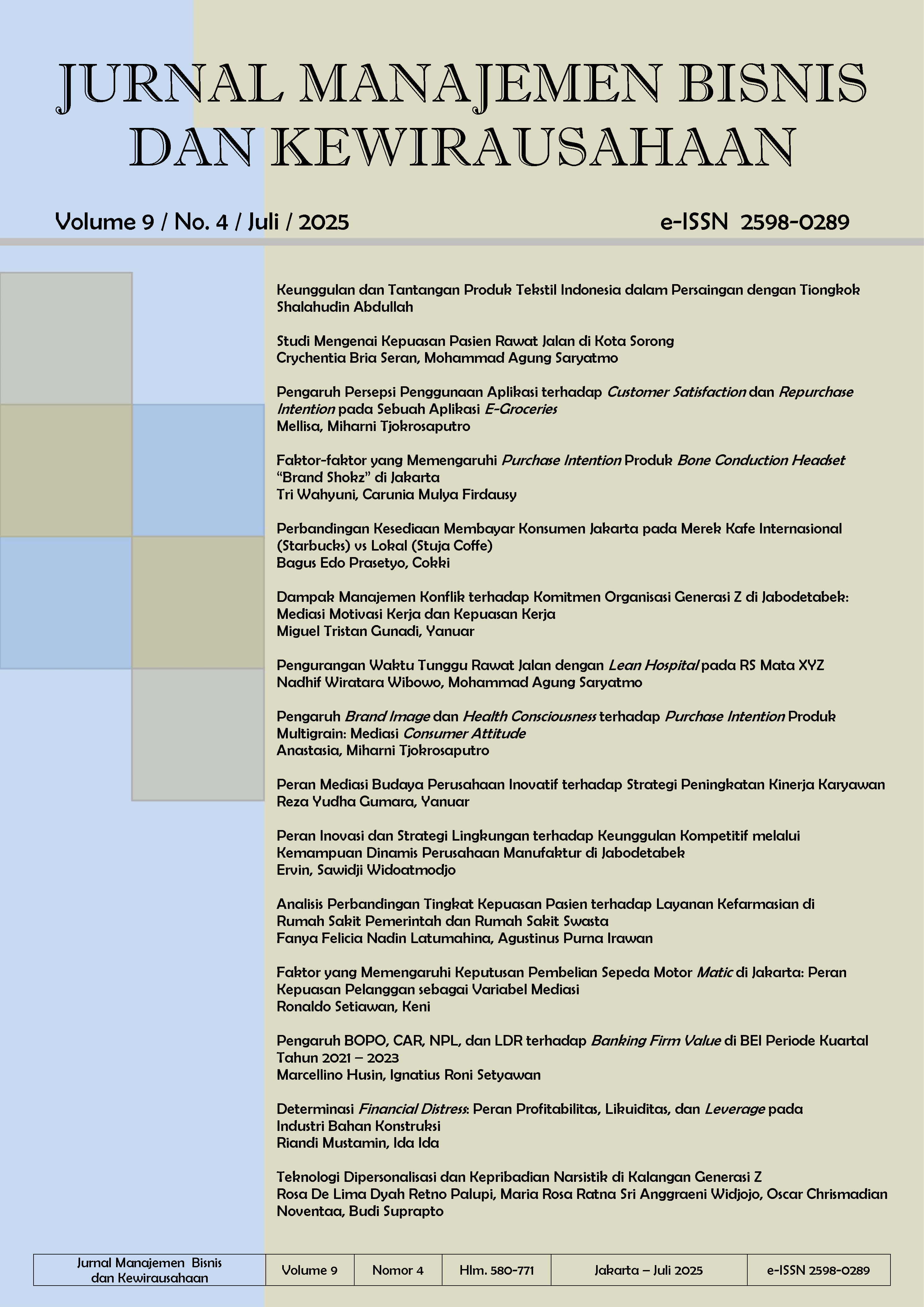Keunggulan dan tantangan produk tekstil Indonesia dalam persaingan dengan Tiongkok
Main Article Content
Abstract
This study aims to identify the regulation of the Textile and Textile Products (TPT) industry in Indonesia and analyze the impact of free trade policies on the competitiveness of local textile products in the face of competition with imported textile products, particularly from China. In addition, this study seeks to analyze whether there are violations of competition law in the rivalry between local TPT products and imported textile products. The research employs a qualitative approach, using in-depth interviews with industry players and analyzing relevant policy documents. The findings indicate that imported textile products, particularly from China, dominate the Indonesian market with lower prices due to government subsidies, cheaper labor costs, and more efficient production technology. Meanwhile, local Indonesian textile products struggle to compete due to higher production costs, limited access to modern technology, and restricted financing. This study recommends the need for stricter protectionist policies towards imported products, incentives for the modernization of the local textile industry, and improved access to low-interest financing to support the competitiveness of local products.
Penelitian ini bertujuan untuk mengidentifikasi pengaturan industri Tekstil dan Produk Tekstil (TPT) di Indonesia serta menganalisis pengaruh kebijakan perdagangan bebas terhadap daya saing produk tekstil lokal dalam menghadapi persaingan dengan produk tekstil impor, khususnya dari Tiongkok. Selain itu, penelitian ini juga bertujuan untuk menganalisis apakah terdapat pelanggaran terhadap hukum persaingan usaha dalam persaingan antara produk TPT lokal dan produk tekstil impor. Metode penelitian yang digunakan adalah pendekatan kualitatif, dengan wawancara mendalam terhadap pelaku industri dan analisis dokumen kebijakan yang relevan. Temuan penelitian menunjukkan bahwa produk tekstil impor, terutama dari Tiongkok, mendominasi pasar Indonesia dengan harga yang lebih rendah, berkat subsidi pemerintah, biaya tenaga kerja yang lebih murah, dan teknologi produksi yang lebih efisien. Di sisi lain, produk tekstil lokal Indonesia kesulitan bersaing karena biaya produksi yang lebih tinggi, keterbatasan akses terhadap teknologi modern, dan pembiayaan yang terbatas. Penelitian ini merekomendasikan perlunya kebijakan proteksi yang lebih ketat terhadap produk impor, insentif untuk modernisasi industri tekstil lokal, serta peningkatan akses pembiayaan dengan bunga rendah untuk mendukung daya saing produk lokal.
Article Details

This work is licensed under a Creative Commons Attribution-NonCommercial-ShareAlike 4.0 International License.
This work is licensed under a Jurnal Manajemen Bisnis dan Kewirausahaan Creative Commons Attribution-ShareAlike 4.0 International License.
References
Azizah, N., & Purnamasari, I. ~D. (2023). Dampak Kebijakan Larangan Impor Pakaian Bekas (Thrift) terhadap Industri Tekstil Lokal di Indonesia. Jurnal Kajian Ilmiah, 23(1), 45–56. https://www.researchgate.net/publication/387966954
Bergman, M. (2008). Theory of Competition Policy. MIT Press.
Bryman, A. (2012). Social Research Methods (4th ed.). Oxford University Press.
Bungin, B. (2010). Penelitian Kualitatif dalam Paradigma Baru. Kencana.
Creswell, J. ~W. (2014). Research Design: Qualitative, Quantitative, and Mixed Methods Approaches (4th ed.). Sage Publications.
Fadillah, F., & Andriyani, R. (2024). Analisis Dampak Permendag No. 8 Tahun 2024 terhadap Industri Tekstil Lokal di Indonesia. Jurnal Ekonomi Dan Kewirausahaan, 6(2), 78–86. https://jurnal.lldikti4.or.id/index.php/jurnalekono/article/download/1759/286
Fajrina, N. (2023). Dampak Pandemi Terhadap Sektor Tekstil Indonesia: Studi Kasus PHK Massal dan Penurunan Ekspor. Jurnal Ekonomi Dan Manajemen Indonesia, 8(3), 112–120. https://bajangjournal.com/index.php/Juremi/article/view/5180/3901
Friedman, L. ~M. (2001). American Law an Introduction (2nd ed.). PT Tatanusa.
Hill, C. ~W. ~L. (2013). International Business: Competing in the Global Marketplace (9th ed.). McGraw-Hill Education.
Krugman, P., & Obstfeld, M. (2014). International Economics: Theory and Policy (9th ed.). Pearson.
Lestari, R. ~D., & Suantara, D. (2008). Penerapan Pengembangan Desain Tekstil pada Tekstil dan Produk Tekstil (TPT). Arena Tekstil, 23(1), 23–29.
Mankiw, N. ~G. (2014). Principles of Economics (7th ed.). Cengage Learning.
Moleong, L. ~J. (2010). Metodologi Penelitian Kualitatif. PT Remaja Rosdakarya.
Pindyck, R. S., & Rubinfeld, D. L. (2013). Microeconomics eight edition. USA: Prentice Hall.
Sadya, S. (2023). Kinerja Industri Tekstil Meningkat 9,34% pada 2022.
Sugiyono. (2012). Metode Penelitian Kuantitatif, Kualitatif, dan R&D. Alfabeta.
Tirole, J. (1988). The Theory of Industrial Organization. MIT Press.
Widodo, A., & Sari, T. ~N. (2023). Strategi Substitusi Impor pada Industri Tekstil: Antara Modernisasi dan Kesenjangan Pekerjaan. Jurnal Riset Ekonomi Dan Akuntansi (JREA), 10(2), 134–142. https://jurnal.itbsemarang.ac.id/index.php/JREA/article/download/990/939


